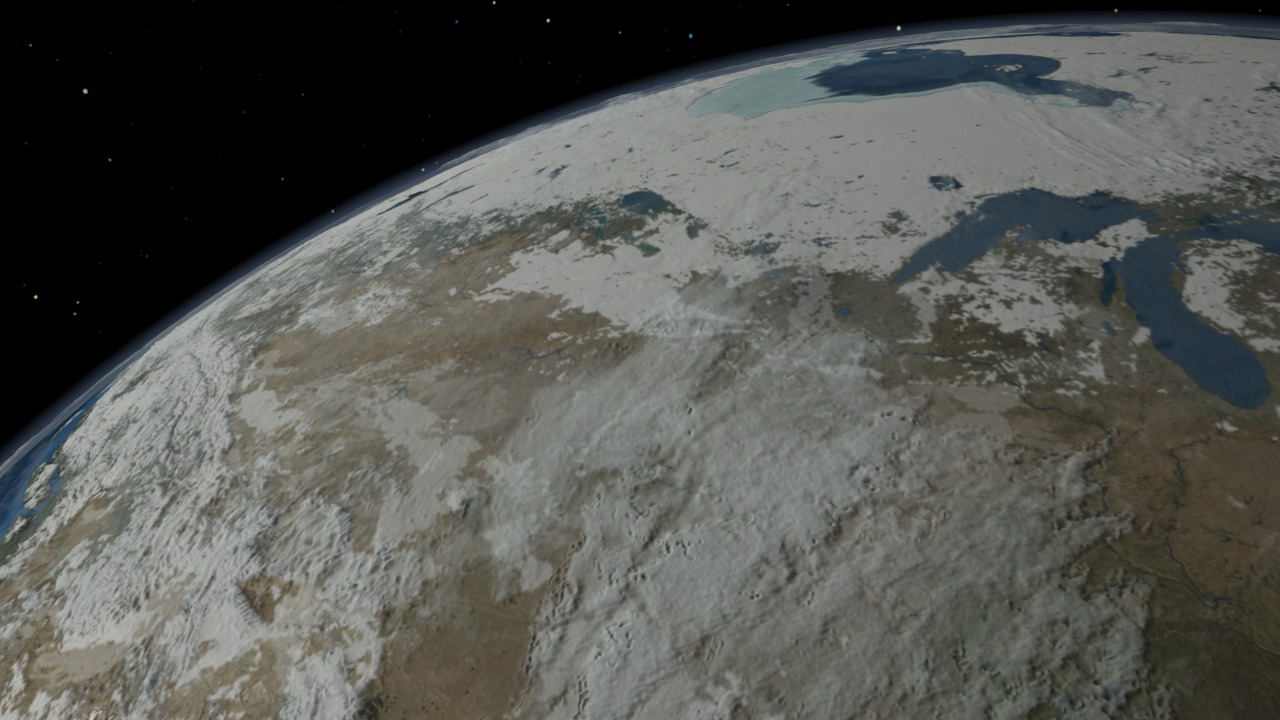Chameleon Earth
Satellites have the unique ability to observe Earth's many dynamic features in motion. Precise, calibrated instruments capture the movement of clouds swirling across continents and the regenerative sprouting of vegetation on land. Peering beneath the ocean surface, these same satellites are able to discern the invisible boundary between areas of warm and cold water and locations teeming with microscopic life. The visualization below explores these features and many others through multiple layers of satellite data collected in the Northern Hemisphere over various time periods and played at different speeds. First, clouds move across North America over 12 days. Then, with the clouds removed and the visualization moving faster, snow and ice cover creep from the Arctic and parts of Canada into the United States over approximately three months. Panning south, a golden mass of warm ocean water trails across the Atlantic. As the visualization speeds up, nearly four years of phytoplankton blooms represented by vibrant shades of green, yellow and red along the west coast of Africa are shown as well as the seasonal greening and browning of vegetation across Europe.

Watch the ever-changing features of our planet unfold.
Layers of satellite data form this variegated map of land, ocean, vegetation and sky in the Northern Hemisphere.

Snow covers the western U.S., clouds blanket the Atlantic coast and sea ice begins to creep across Hudson Bay, seen in data from Dec. 5, 2005.

Shades of gold in the Caribbean Sea and along parts of the U.S. coastline represent water that is around 80 degrees Fahrenheit or above.

Aqua, a flagship of NASA's Earth Observing System, includes instruments that observe clouds, oceans, snow cover, ice and vegetation.
Credits
Please give credit for this item to:
NASA's Goddard Space Flight Center
-
Animators
- Cindy Starr (Global Science and Technology, Inc.)
- Greg Shirah (NASA/GSFC)
- Alex Kekesi (Global Science and Technology, Inc.)
- Tom Bridgman (Global Science and Technology, Inc.)
-
Writer
- Patrick Lynch (Wyle Information Systems)
Release date
This page was originally published on Thursday, October 27, 2011.
This page was last updated on Wednesday, May 3, 2023 at 1:53 PM EDT.
